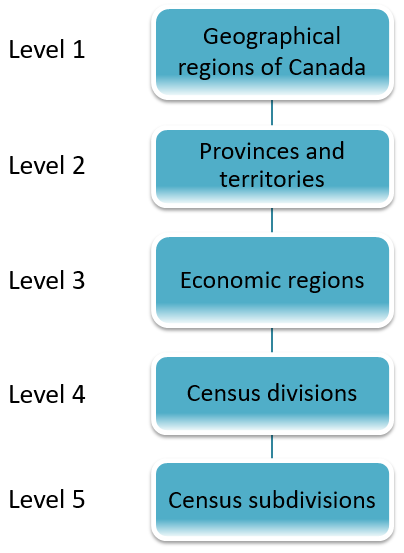An Economic region (ER) is a grouping of complete Census division (CD) (with one exception in Ontario) created as a standard geographic unit for analysis of regional economic activity.
Such a unit is small enough to permit regional analysis, yet large enough to include enough respondents that, after data are screened for confidentiality, a broad range of statistics can still be released.
The regions are based upon work by Camu, Weeks and Sametz in the 1950s. At the outset, boundaries of regions were drawn in such a way that similarities of socio-economic features within regions were maximized while those among regions were minimized. Later, the regions were modified to consist of counties which define the zone of influence of a major urban centre or metropolitan area. Finally, the regions were adjusted to accommodate changes in CD boundaries and to satisfy provincial needs.
An ER is a geographic unit, smaller than a province, except in the case of Prince Edward Island and the Territories. The ER is made up by grouping whole CDs, except for one case in Ontario, where the city of Burlington, a component of Halton (CD 35 24), is excluded from the ER of Toronto (ER 35 30) and is included in the Hamilton–Niagara Peninsula ER (ER 35 50), which encompasses the entire census metropolitan area of Hamilton.
ERs may be economic, administrative or development regions. Within the province of Quebec, economic regions are designated by law (les régions administratives). In all other provinces, economic regions are created by agreement between Statistics Canada and the provinces concerned.
There were 76 ERs in 2021. ERs are listed with their component CDs.

Description of Figure 4
- Level 1 - Geographical regions of Canada
- Level 2 - Provinces and territories
- Level 3 - Economic regions
- Level 4 - Census divisions
- Level 5 - Census subdivisions